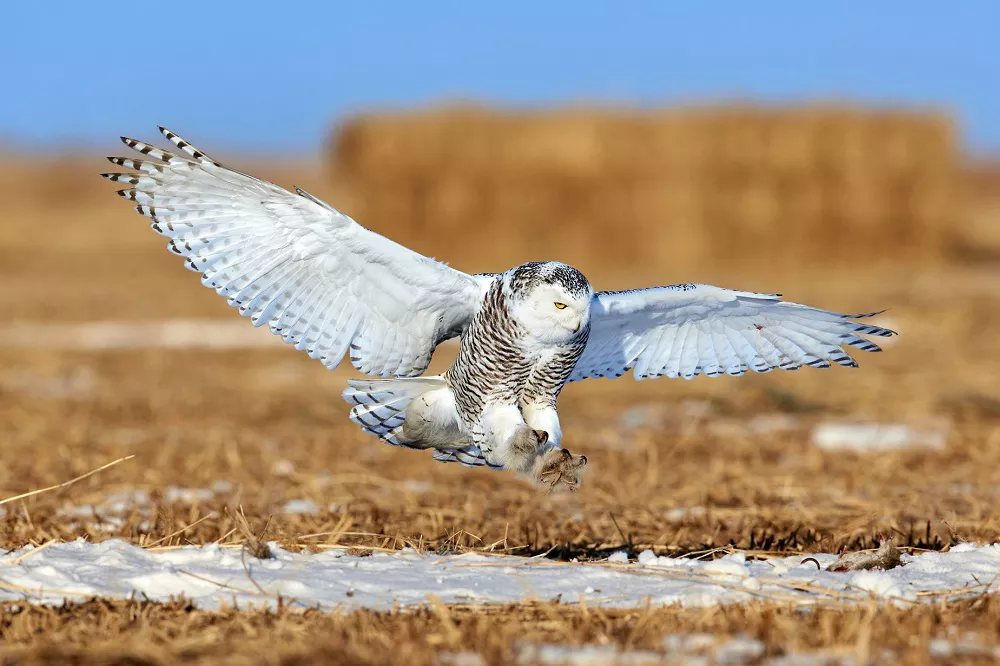The Snowy Owl, also known as the Arctic Owl or Great White Owl, is a majestic bird of prey that inhabits the northern regions of North America and Eurasia. One of the most recognizable features of this owl is its beautiful white plumage that helps it blend in with the snowy environment it calls home. But what do Snowy Owls eat? In this article, we explore the diet of these magnificent creatures and how they hunt for their food.
General Overview of Snowy Owl’s Diet
Snowy Owls are opportunistic hunters, which means they feed on whatever prey is available to them at any given time. Their primary food source is lemmings, small rodents that inhabit the tundra regions where Snowy Owls live. However, when lemmings are scarce, Snowy Owls will switch to other prey such as rabbits, hares, voles, mice, birds, fish, and even carrion.
Lemmings: The Primary Food Source
As mentioned earlier, lemmings make up the majority of the Snowy Owl’s diet. These small rodents are abundant in the tundra regions, providing an excellent food source for predators like the Snowy Owl. Lemmings are prolific breeders, and their populations can fluctuate dramatically from year to year. When lemming populations are high, Snowy Owls thrive, producing more offspring and growing larger in size. However, when lemming numbers drop, Snowy Owls may have difficulty finding enough food to survive, and many may die.
Rodents: A Secondary Food Source
When lemming populations are low, Snowy Owls must rely on other prey to sustain themselves. Small rodents such as voles, mice, and shrews become important food sources during these times. Snowy Owls use their keen eyesight and hearing to locate these rodents, often swooping down from above to capture them in their talons. Snowy Owls may also hunt for rabbits and hares, which provide a more substantial meal than rodents.
Birds: An Occasional Prey
Snowy Owls are also known to prey on birds such as ptarmigans, grouse, and waterfowl. They use their stealth and speed to surprise their prey, which they grab with their talons and kill with a swift bite to the neck. While birds do not make up a significant portion of the Snowy Owl’s diet, they can provide a crucial source of nutrition when other prey is scarce.
Fish: A Coastal Delicacy
In addition to hunting on land, Snowy Owls are capable of catching fish along the coastlines where they reside. They use their sharp talons to grasp fish swimming near the surface of the water, then bring them to shore to consume. Fish are not a primary food source for Snowy Owls, but they can be an important supplement to their diet, especially during the breeding season when adults need to feed their young.
Carrion: A Last Resort
Like many predators, Snowy Owls will occasionally scavenge carrion when other food sources are scarce. They may feed on the carcasses of other animals, including mammals and birds, that have died from natural causes or been killed by other predators. While carrion is not an ideal food source, it can help Snowy Owls survive during lean times.
Conclusion
Snowy Owls are impressive predators that have adapted to live in some of the harshest environments on Earth. Their diet consists primarily of lemmings, but they are opportunistic hunters that will eat whatever prey is available to them at any given time. From small rodents to birds, fish, and even carrion, Snowy Owls have a diverse diet that allows them to survive in a challenging and ever-changing landscape. While we may not be able to match the Snowy Owl’s hunting prowess, we can certainly appreciate their impressive adaptability and resilience in the face of adversity.
Related topics:


 Facebook
Facebook  Instagram
Instagram  Youtube
Youtube 